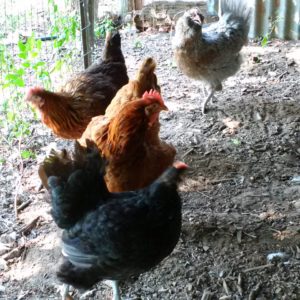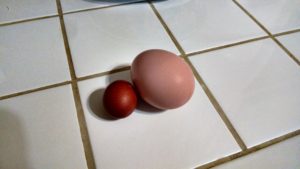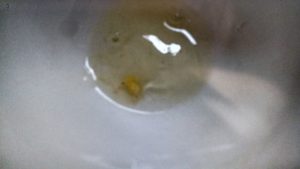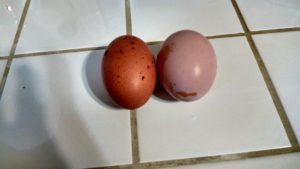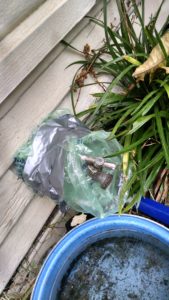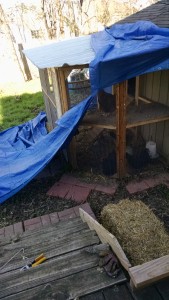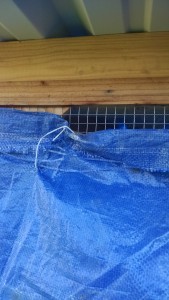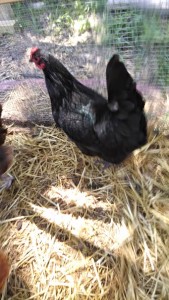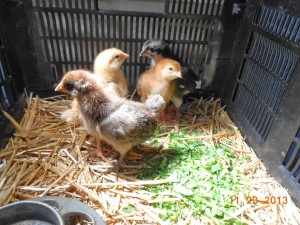UPDATE: The hens have a home in a lovely retirement community at Eden’s Organic Garden Center! They are calm, happy, and in retirement (except for the occasion egg they choose to lay). Here’s an updated picture of them in their new habitat:
In Search of RETIREMENT HOME for 4 hens (ages 4 and 5). (email Anita@AnitasArbor.com if you would like to inherit these hens) The hens have been together since 2013, and even the oldest is still laying occasionally – in spring we are covered up with eggs. They have all been fed organic feed since they were peeps. They are:
Winnie:
Winnie came from Peace and Love Farms in 2013, and resided at Urban Acres Market for a year before coming to live with me. She is about 5 years old. She is an Ameraucana and is anoble gray with a long neck. She is shy of people, and is the last to emerge when the greens (chard, bok choy or tatsoi), scratch, and chunks of pear have been spread out. She lays eggs with a tint of green.
Mavriki (Mav for short)
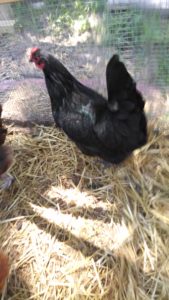 Mavriki is Greek for “little black one.” She is an Australorp with irridescent black feathers. She came to me as a peep in November of 2013. She lived at Urban Acres will late 2014 and then came to live with me. She was the one who noted, after the move, that they were in a different place and tried to alert the others, who were too busy pecking and scratching for grain. She alerts me to something that needs attention – like when another hen, Fancy Pants, got sick. Shen Fancy Pants the one who brooded eggs, died, Mav took over the task of brooding – trying hard to hatch that fake egg! She likes organic produce, and frozen peaches. Her eggs are brown.
Mavriki is Greek for “little black one.” She is an Australorp with irridescent black feathers. She came to me as a peep in November of 2013. She lived at Urban Acres will late 2014 and then came to live with me. She was the one who noted, after the move, that they were in a different place and tried to alert the others, who were too busy pecking and scratching for grain. She alerts me to something that needs attention – like when another hen, Fancy Pants, got sick. Shen Fancy Pants the one who brooded eggs, died, Mav took over the task of brooding – trying hard to hatch that fake egg! She likes organic produce, and frozen peaches. Her eggs are brown.
Aurie and Rosie (O’Grady, as in Nosey Rosie O’Grady):
Aurie is an Ameraucana, and her eggs are blue tinted. She is the middle hen in the picture. She came to me as a peep in November of 2013 and was raised at Urban Acres, then came home with me in late 2014. She is pretty calm and lays throughout the summer, when other hens take a break. She delights in watermelon, and particularly frozen watermelon in the summer.
Rosie is also an Ameraucana, and lays light rose-colored eggs. She is the hen on the right in the picture. She was also raised as a peep from November 2013 until coming home with me in late 2014. She gets her name because she was the one, from about 2 weeks of age, who was curious every time I went into the coop. She watched me and inquired as to what I was doing. She continues to do so to the this – she will watch me while others are indulging in the goodies I bring. She, along with the others, love the heads of broccoli.
A note in memoriam – the hen at the left of the picture was Ginger. She is recently deceased. She was the Rhode Island Red, and was head hen. RIP, Ginger.

